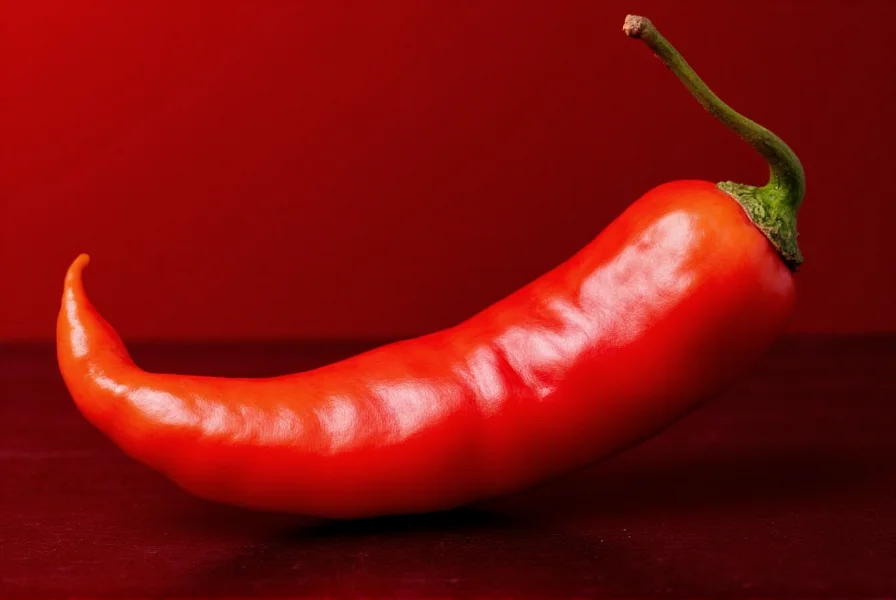The Bhut ghost pepper continues to captivate spice enthusiasts and culinary professionals worldwide with its complex flavor profile and extreme heat. Understanding this remarkable chili requires examining its scientific classification, historical background, and practical applications. This comprehensive guide provides verified information about one of nature's most potent edible substances, separating fact from the many myths that surround it.
Scientific Classification and Heat Measurement
Botanically classified as Capsicum chinense, the Bhut ghost pepper belongs to the same species as other super-hots like the Scotch bonnet and Trinidad moruga scorpion. Despite its name suggesting Chinese origin, all C. chinense varieties actually originated in the Americas.
When discussing bhut ghost pepper heat level, the Scoville scale remains the standard measurement. Independent laboratory testing has consistently placed the Bhut ghost pepper between 800,000 and 1,041,427 SHU. To put this in perspective, it's approximately 200-400 times hotter than a typical jalapeño (2,500-8,000 SHU) and about twice as hot as a habanero (100,000-350,000 SHU).

Historical Background and Geographic Origin
The Bhut ghost pepper originates from the Assam region of Northeast India, where it has been cultivated for centuries. Local communities traditionally used it not only for culinary purposes but also as a natural rodent deterrent and in folk medicine. The name "Bhut" (meaning "ghost" in Assamese) reflects how the pepper's intense heat seemingly appears "from another world" after a deceptive initial flavor.
Western awareness of the bhut ghost pepper scoville units began increasing significantly after 2000, culminating in its official recognition by Guinness World Records in 2007. Though it lost the "world's hottest" title to the Carolina Reaper in 2013, the Bhut ghost pepper remains one of the most widely available and recognized super-hot chilies globally.
Physical Characteristics and Growth Requirements
Mature Bhut ghost peppers typically measure 2.4-2.8 inches long with a distinctive wrinkled, tapered shape. They progress from green to vibrant red as they ripen, though some varieties may turn yellow, orange, or chocolate-colored.
| Characteristic | Details |
|---|---|
| Scientific Name | Capsicum chinense |
| Scoville Rating | 800,000-1,041,427 SHU |
| Mature Length | 2.4-2.8 inches (6-7 cm) |
| Growth Duration | 150-180 days to maturity |
| Preferred Climate | Hot, humid (75-90°F / 24-32°C) |
Growing Bhut ghost peppers requires specific conditions: they thrive in hot, humid climates with well-draining soil and consistent moisture. The plants typically reach 3-4 feet in height and produce abundant fruit when properly cared for. Gardeners attempting bhut ghost pepper growing conditions should note that these plants require a long growing season (150-180 days) and are particularly sensitive to temperature fluctuations.
Culinary Applications and Safety Considerations
The bhut ghost pepper culinary uses extend beyond mere heat provision. When used judiciously, it contributes a distinctive smoky, fruity flavor with subtle floral notes. Professional chefs often incorporate it into sauces, chutneys, and specialty dishes where its complex flavor profile can shine without overwhelming the palate.
Handling Bhut ghost peppers requires extreme caution. Always wear nitrile gloves when processing these chilies, as capsaicin oils can cause severe skin irritation and accidental transfer to eyes or other sensitive areas. Never handle Bhut ghost peppers then touch your face without thorough hand washing. If working with dried peppers, consider wearing a respirator to avoid inhaling capsaicin particles.

Comparative Analysis with Other Super-Hot Peppers
When evaluating bhut ghost pepper vs carolina reaper, several key differences emerge. The Carolina Reaper (1,400,000-2,200,000 SHU) significantly exceeds the Bhut ghost pepper in heat intensity. However, many chili connoisseurs prefer the Bhut ghost pepper for its more balanced flavor profile and slightly more manageable heat curve.
Compared to the Trinidad moruga scorpion (1,200,000-2,000,000 SHU), the Bhut ghost pepper offers a different heat experience - the scorpion delivers an immediate, intense burn, while the Bhut ghost pepper's heat builds more gradually but lasts longer. Understanding these nuances helps enthusiasts select the appropriate pepper for specific culinary applications.
Common Misconceptions and Safety Myths
Several persistent myths surround the Bhut ghost pepper. Contrary to popular belief, consuming Bhut ghost peppers will not cause permanent damage to healthy individuals, though it may cause temporary discomfort. The notion that milk is the only effective remedy for capsaicin exposure is also inaccurate - any fat-containing substance (including yogurt, peanut butter, or even olive oil) can help neutralize the burning sensation.
Perhaps the most dangerous misconception involves how to handle bhut ghost pepper safely. Many amateur chili enthusiasts underestimate the risks of direct contact, leading to unnecessary emergency room visits. Always treat Bhut ghost peppers with the same respect you would hazardous chemicals.
Practical Applications Beyond Cuisine
Beyond culinary uses, Bhut ghost peppers serve practical purposes. Indian military forces have developed Bhut ghost pepper-based smoke grenades for non-lethal crowd control. Gardeners use dried Bhut ghost pepper flakes as natural rodent deterrents. Some traditional medicine systems incorporate carefully measured amounts for purported health benefits, though scientific evidence for these applications remains limited.
Conclusion
The Bhut ghost pepper represents nature's remarkable ability to produce both extraordinary flavor and intense sensation. When approached with proper knowledge and respect, it offers culinary enthusiasts a unique experience that extends far beyond mere heat. Understanding its true characteristics, appropriate handling techniques, and realistic applications allows for safe enjoyment of this legendary chili. As with any powerful ingredient, the key to successfully incorporating Bhut ghost peppers lies in moderation, preparation, and respect for its formidable properties.











 浙公网安备
33010002000092号
浙公网安备
33010002000092号 浙B2-20120091-4
浙B2-20120091-4